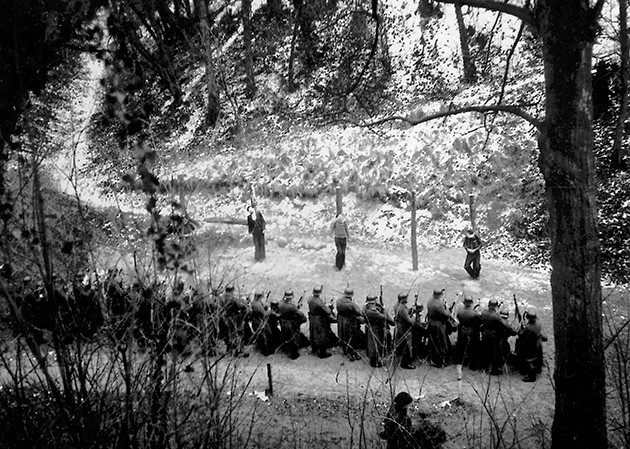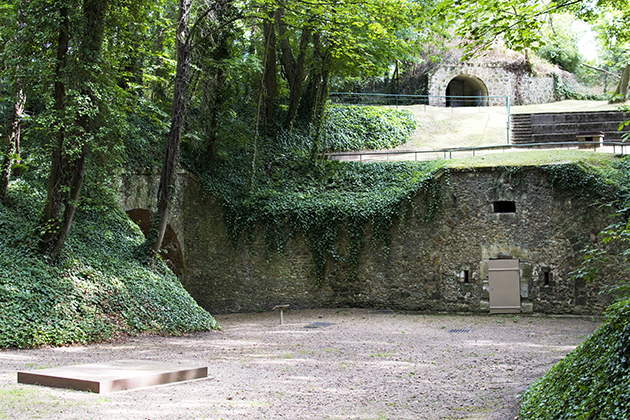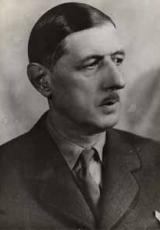Remembering the Resistance: Mont Valérien

Across France, the memory of the Resistance is etched in the landscape in a variety of ways. The monumental structure of the Memorial of Combatant France, on Mont Valérien, became the first of the country’s “Major National Remembrance Sites”. It is without doubt one of the key symbols of the State heritage designation of historic Second World War sites.
Between spring 1941 and summer 1944, 1 008 men were executed on Mont Valérien, in a clearing nestled on the second slope of this military fortress completed in the mid-19th century. On 1 November 1944, ceremonies on the site of the executions drew crowds comprised of what had been underground organisations, families and the new leaders of the restored Republic. From Paris, General de Gaulle made his way to the Carré des Fusillés, at Ivry Cemetery, where those executed were buried, then on to Mont Valérien. There, alone at the foot of the bank where, a few months earlier, the execution stakes still stood, the head of the Provisional Government of the French Republic paid the nation’s tribute to those then referred to by the generic term “heroes” or “martyrs”. At the end of the ceremony, De Gaulle pledged that the site of Mont Valérien, known to everyone during the war, would be made a “key remembrance site of combatant France”. A year later, 11 November 1945 saw the official opening of a provisional memorial in a pillbox, with a panel before it displaying a preliminary Cross of Lorraine. Inside lay the remains of 15 – soon to be 16 – individuals who “died for France”, representative of the diversity of military and clandestine engagements.

Execution of members of the Manouchian Group on Mont Valérien, 21 February 1944.
© Association Les Amis de Franz Stock / ECPAD
Among those heroes’ remains, completed by a tribute to the victims of deportation, one vault remained empty, awaiting the last Companion of the Liberation to join his brothers-in-arms for the memorial to form a coherent whole. It was not until Charles de Gaulle’s return to power, in 1958, that a heritage complex was built at Mont Valérien which put the memory of all Second World War engagements at the heart of the nation’s values. On 18 June 1960, the present-day Memorial of Combatant France was officially opened. Designed to instil in the masses the respect due to the combatants honoured in the crypt for their sacrifice, the monumental ensemble of over 7 000 sqm is the work of Félix Bruneau, a member of the Free French, honorary inspector-general of the Civic Buildings and National Palaces service, and curator of Mont Valérien since 1944. A huge parade ground and a crypt were dug into the fortress’s moat. This expanse is enclosed by the 110 metre-long façade of the memorial and a road forming a V for victory, which appears to reproduce on the ground the shadow cast by the 12 metre-tall Cross of Lorraine. The sides of the esplanade climb the banks of the moat, with two gigantic steps from which to view the ensemble. The façade presents the symbolic representation of De Gaulle’s call to arms of 18 June 1940, through 16 high reliefs which, like the 16 bodies in the crypt, illustrate the diversity of the fighting involving French people. In the centre, in pink sandstone, is the Cross of Lorraine, in front of which burns the Flame of Resistance, the sister flame to the one that burns beneath the Arc de Triomphe. Beneath the branches of the cross are two solid, gilded doors leading into the crypt, where the remains transferred from the preliminary memorial now lie, together with the deportation urn.

The execution clearing today. © ONAC-VG
From that time forth, the monumental structure of the Memorial of Combatant France also became the compulsory entrance and exit for anyone visiting the execution clearing. On climbing the steps that lead from the crypt to the “execution trail”, visitors are immediately struck by the contrast between the two spaces. On the one hand is the solemn stone structure, on the other a path through the forest past overgrown pillboxes to the chapel. The “execution trail” had remained untouched since the summer of 1944, the clearing frozen in the delicate silence of the woods, ideal for contemplation. In 1959, an additional path was built, around the clearing rather than across it. It was called the “Remembrance Trail” and, given its purpose of remembering the dead, dispensed with words or explanations. Leading from the crypt, at the lowest level of the military structure, up to the chapel nearly at the top of the hill, the path comprises many flights of steps and appears to lose the visitor in a maze. Today, an educational trail guides visitors and school groups through this discovery. A monument in the form of a bell, created by artist Pascal Convert, engraved with the names of all those executed here, was unveiled in 2003.
Considered from the point of view of its landscapes, its physiognomy, its spaces, Mont Valérien is a dual space. It is at once vertical and horizontal, vegetable and mineral, private and formal, historic and memorial, natural and monumental. In short, it is on Mont Valérien that the various Second World War remembrance interventions by the State appear to find their origins, be it in the monumental construction of remembrance or by promoting the history of a place of sacrifice.


